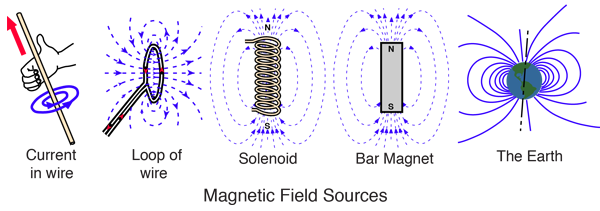Magnetic Field
Magnetic fields are produced by electric currents, which can be macroscopic currents in wires, or microscopic currents associated with electrons in atomic orbits. The magnetic field B is defined in terms of force on moving charge in the Lorentz force law. The interaction of magnetic field with charge leads to many practical applications. Magnetic field sources are essentially dipolar in nature, having a north and south magnetic pole. The SI unit for magnetic field is the Tesla, which can be seen from the magnetic part of the Lorentz force law Fmagnetic = qvB to be composed of (Newton x second)/(Coulomb x meter). A smaller magnetic field unit is the Gauss (1 Tesla = 10,000 Gauss).

| Notes on units |
Electromagnetic force
Magnetic field concepts
| HyperPhysics***** Electricity and Magnetism | R Nave |

